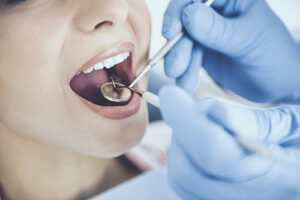Dentists perform many tooth extractions each year. But these critical procedures do not take place until your dentist considers all other options. So what does an extraction entail and what must you know before your tooth is pulled?
Reasons for Tooth Extractions
 Tooth extractions take place for a variety of reasons related to overall dental wellness. These reasons include preparation for braces or to remedy tooth overcrowding. Dentists also pull one or more teeth because of decay or damage, and as part of radiation or chemotherapy treatment.
Tooth extractions take place for a variety of reasons related to overall dental wellness. These reasons include preparation for braces or to remedy tooth overcrowding. Dentists also pull one or more teeth because of decay or damage, and as part of radiation or chemotherapy treatment.
To ensure you feel comfortable during the tooth extraction, such as wisdom teeth removal, the dentist numbs the area near that tooth using a local anesthetic. If you need further sedation, the dentist provides a sedative to help you relax.
Some teeth become impacted, meaning they do not grow beyond the gum line. When this happens, the dentist sometimes breaks the impacted tooth into pieces. This provides an easier and more comfortable removal.
Types of Tooth Extraction Procedures
If you face tooth extractions, ask your dentist whether you need a simple or surgical procedure. Some extractions take place in your dentist’s office, whereas others require referral to a specialist.
Simple extraction removes a tooth visible in your mouth. Your dentist uses this method for a decayed or damaged tooth. He also relies on simple extraction to prepare for braces or a retainer.
You receive local anesthesia and possibly sedation for simple tooth removal. After the procedure’s completion, over-the-counter pain relievers manage any discomfort.
The surgical method removes teeth you cannot see, such as broken teeth or those not yet grown into place. For this, most people receive local anesthesia. Some undergo general anesthesia if they suffer certain medical conditions. If you have teeth removed surgically, prescription pain medication helps you recover from the procedure within a day or two.
Avoiding Problems after Your Tooth Removal
When you go through tooth removal, following your dentist’s instructions helps you feel better quickly. You should stick to soft foods and liquids for a few days after your anesthesia wears off.
Proper oral health care and a regular dental examination play a significant role in your tooth extractions recovery. Daily oral care includes brushing your teeth as usual. But avoid the area directly around the extraction site for about two days.
Some people experience a “dry socket” after oral surgery. This happens when a blood clot fails to form in the tooth socket, or the clot breaks off too soon. This exposes your bone, causing pain and requiring special care from your dentist for the best healing.
Some other tooth extraction problems include a sore jaw after anesthesia or strain of the procedure, itself. Some people may experience a numb lip or chin, especially if they underwent wisdom teeth removal. Of course, an infection can happen after pulling teeth. But if you have a healthy immune system and practice good oral care, this is unlikely.
Tooth Extractions and Other Dental Services in Queen Creek, Arizona
When you have decayed or damaged teeth in Queen Creek, Arizona, you need prompt and thorough dental care. But you also need ongoing dental care for your best health and hygiene. This care takes place at Marketplace Dental Excellence in Queen Creek. Services at Marketplace Dental Excellence include:
- General dentistry
- Dental implants
- Teeth cleaning
- Preventive dentistry
- Sedation dentistry
- Restorative dentistry
- Cosmetic dentistry
Located close to the Phoenix-Mesa airport and convenient to your home or workplace in Queen Creek, Marketplace Dental Excellence looks forward to providing your family dental care including tooth extractions if necessary. Call Marketplace Dental Excellence at 480.545.8700 to schedule your first visit.

